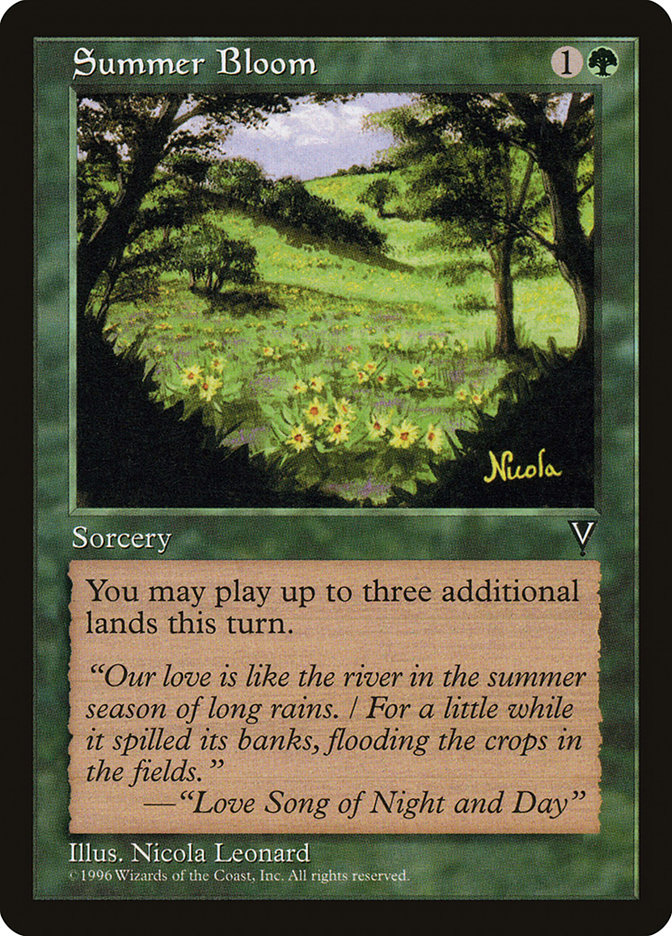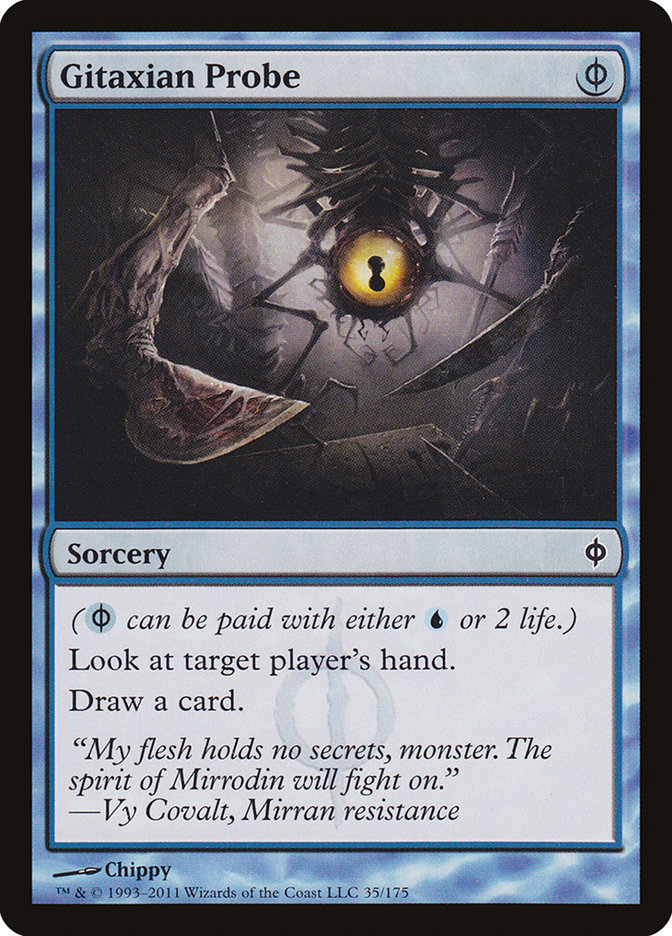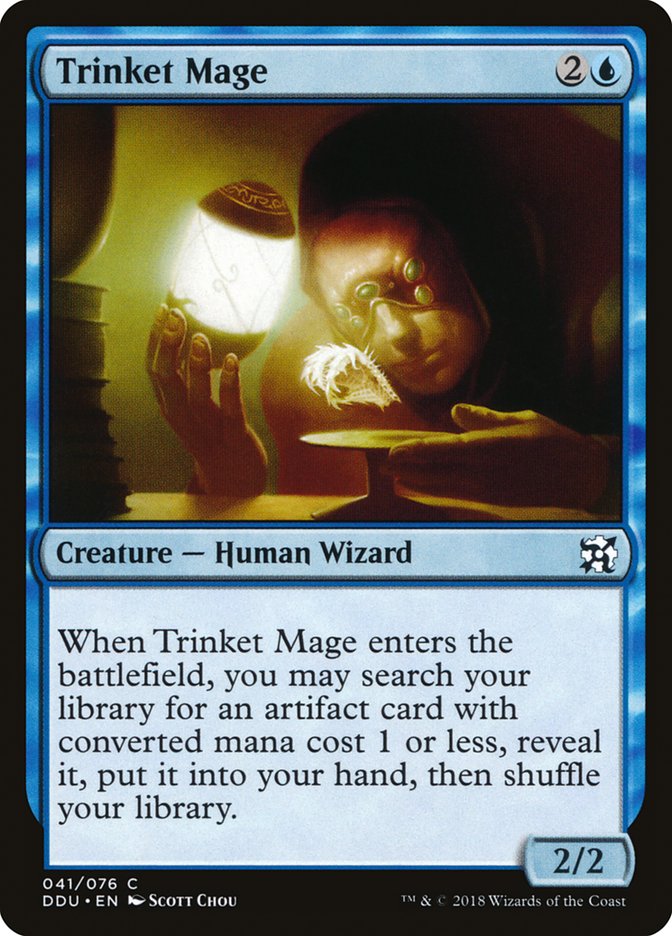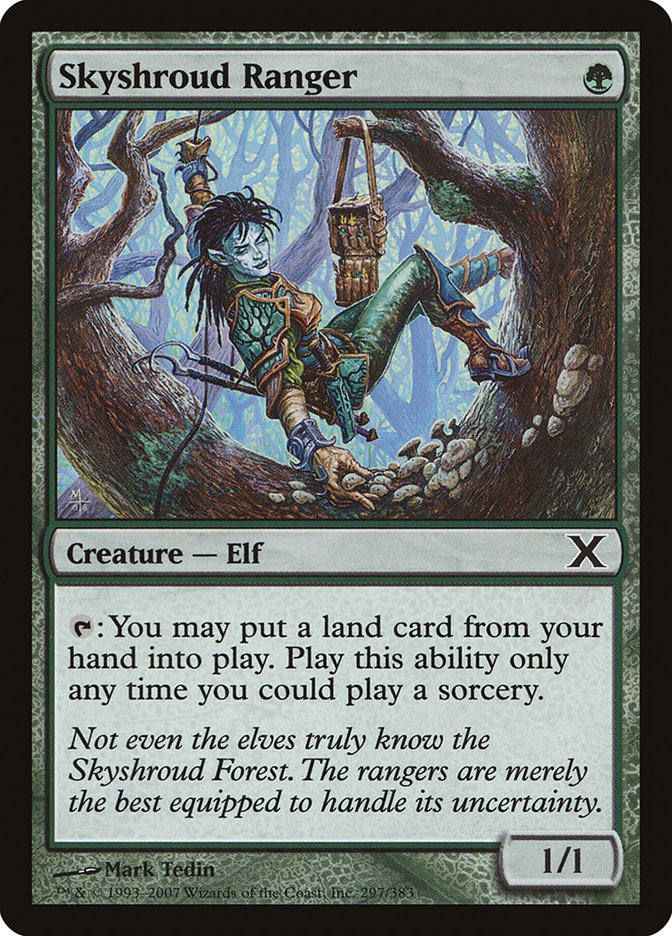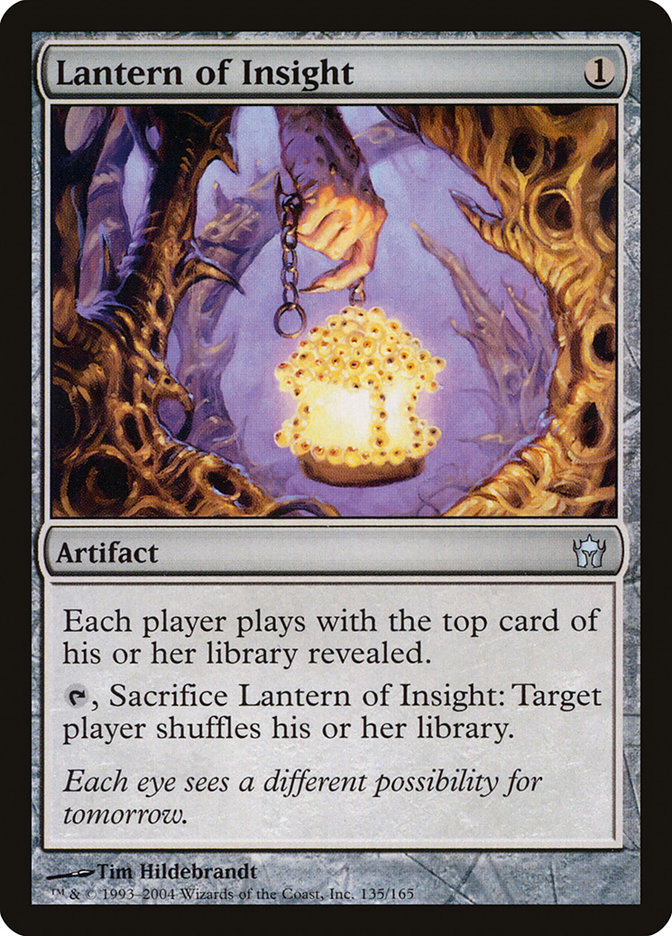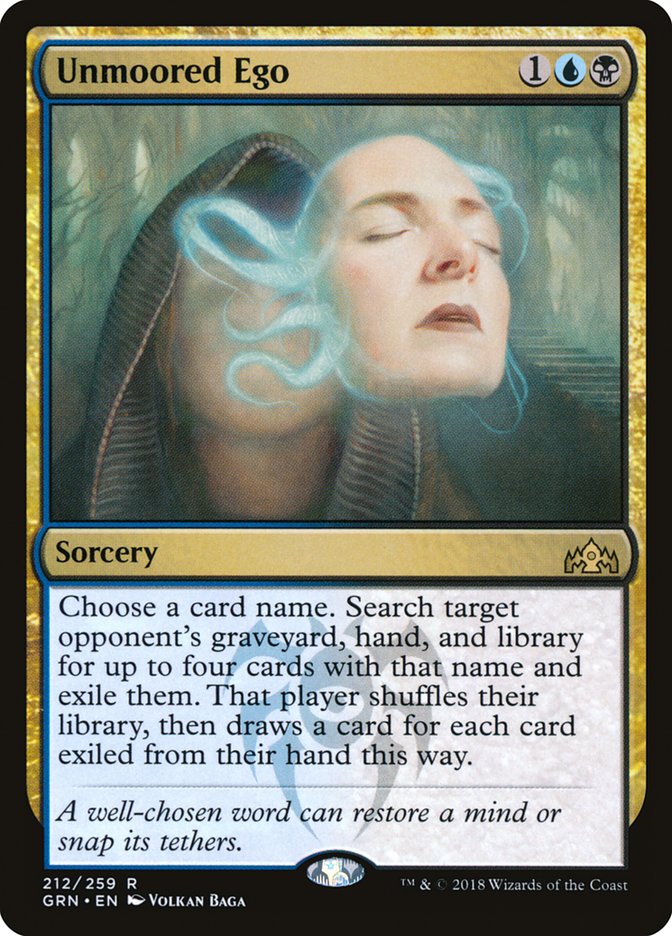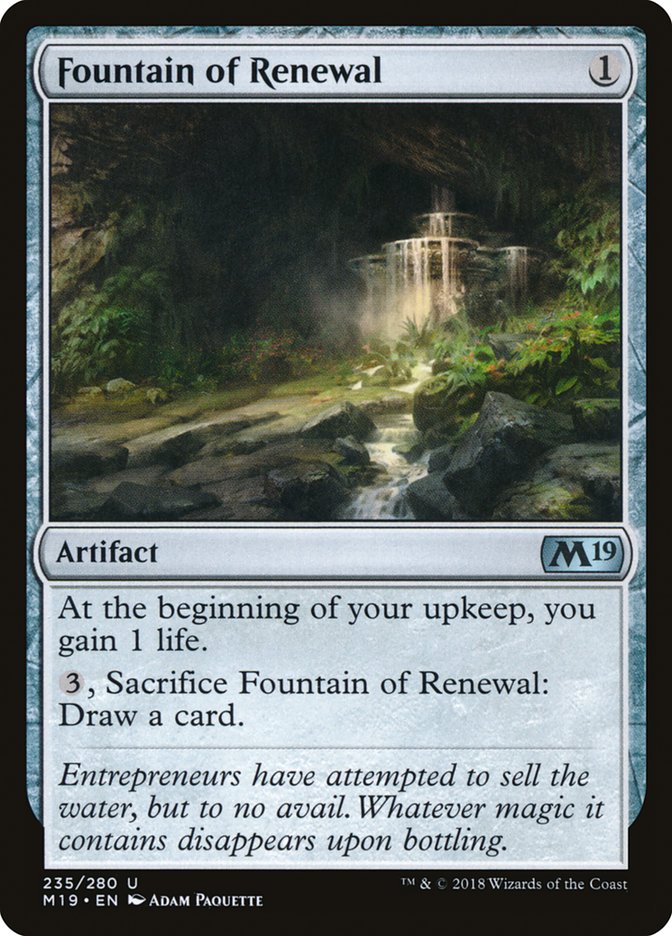With the first MagicFest, MagicFest Oakland, coming up this weekend, I’m reevaluating Modern to figure out if it’s time for me to set Ironworks aside. Without time to properly learn a new deck like Abzan Evolution, I’m primarily considering decks I already know well, which brings me to some of the other Ancient Stirrings decks in the format, Amulet Titan and Lantern.
In Modern, a deep pool of decks will regularly change position as new threats emerge, archetypes develop, and metagames generally shift. Sometimes decks stop doing well and fall out of the format, but sometimes, things shift again and a window opens for an old deck to reappear. In general, if a deck was once of Modern power level, it likely isn’t far off now, and might just need a single new card or new innovation to bring it back to the center stage or at least reasonable viability with the chance to shine in some metagames.
Infect and Amulet Titan have had similar trajectories, though Amulet Titan a little more extreme – both decks were successful top tier Modern decks that almost everyone immediately abandoned as a result of a banning. For Amulet Titan, a key card of the deck, Summer Bloom, was banned, which changed a lot of the deck’s basic functionality. For Infect, Gitaxian Probe just made the deck a little weaker, but it was enough that everyone moved away from it (likely in conjunction with other metagame shifts against it, like the printing of Fatal Push). Both decks maintained a very small dedicated following who tried to make them work despite the bans.
In Amulet Titan’s case, this has been an interesting process. Losing Summer Bloom forced Amulet Titan to become less explosive, which meant Hive Mind was much less reliable as an alternate finisher, and instead, the deck had to focus a little more on its role as a fairer big mana deck. Walking Ballista was a pretty big upgrade for the deck, which gained the ability to transmute Tolaria West for a threat without needing to go through Summoner’s Pact (which opens up a chance for the opponent to use Dispel, for example), but it also makes the deck much better at interacting with opposing creatures.
The biggest advantage of Walking Ballista is actually an innovation (sorry for not giving credit to the actual first person to do it, as I don’t know who that was) to include Trinket Mage, which can find Amulet of Vigor, Walking Ballista, and even Engineered Explosives. This makes it a remarkably useful toolbox card, finding engine, threat, and removal. I believe the addition of Trinket Mage to the deck was a fairly recent game changer for the deck’s power level.
The other recent innovation in Amulet Titan is Skyshroud Ranger, a barely worse alternative to Sakura-Tribe Scout that functions as a few extra copies of Sakura-Tribe Scout to help make the deck a little more explosive.
Amulet Titan with these changes looks pretty exciting to me, though while the community seems largely in agreement about the optimal spells in the maindeck, the sideboard and thus the lands, largely as a function of which sideboard cards you’re trying to cast, remain somewhat up for debate.
The primary split seems to be on whether to focus on white or red sideboard cards. Daryl Ayers showcased a version with four Selesnya Sanctuaries and Kabira Crossroads to support Path to Exile, Stony Silence, and Silence in the sideboard in a recent Modern Challenge. Previously, Abrade and Firespout were the interactive elements of choice.
With Arclight Phoenix having soared to prominence in recent weeks, the incentives around removal shift considerably. Because Arclight Phoenix has Lightning Bolt, other creatures that are bad against Lightning Bolt get pushed out of the format (we’ve seen a corresponding drop off in Bant Spirits), and because Arclight Phoenix relies on creatures Lightning Bolt is bad against (Arclight Phoenix and Thing in the Ice), Abrade similarly falls off in utility while Path to Exile still efficiently answers everything that needs to be answered. This makes me think the move to white cards fundamentally makes sense.
Before Summer Bloom was banned, Amulet Titan had it all. It was fast, consistent, and resilient. It could both outrace and outgrind almost everyone, so it was favored at almost all stages of the game against almost any opponent who didn’t have Blood Moon.
With the banning of Summer Bloom, the deck became slower and the corresponding loss of Hive Mind meant that it relied more on attacking than it previously had. Ensnaring Bridge is more effective, gaining arbitrarily large life matters, and the fact that it’s slower than it had been means it can be raced by faster combo decks more reliably.
This is an argument for / explanation of Silence, for one thing, as a way to buy time against combo decks that would outrace you by a turn, but also just a fact about the deck’s positioning.
Given these arguments in favor of white, I’d be inclined to start from Daryl Ayers’s list:
Creatures (17)
- 4 Azusa, Lost but Seeking
- 3 Trinket Mage
- 1 Skyshroud Ranger
- 4 Sakura-Tribe Scout
- 4 Primeval Titan
- 1 Walking Ballista
Lands (29)
Spells (14)

On paper, I’d want to avoid matchups like Abzan Evolution, Ironworks, and Infect that just win too quickly. Even Tron, which used to be one of the best matchups, is a little scary now.
However, Bojuka Bog does amazing work against Dredge (currently the most popular combo deck), especially if you can keep a Sakura-Tribe Scout on the battlefield, and I believe it lines up well against Izzet Phoenix because their interaction isn’t great and Amulet Titan is a little too fast for Izzet Phoenix to outrace when it can’t meaningfully interact. Blood Moon would be a problem, but for the moment, Alpine Moon is the far more popular choice for Izzet Phoenix, which is much less of a problem.
The rise of Izzet Phoenix is the driving narrative of Modern now, as I see it, and I kind of think of it as the second coming of Splinter Twin. It’s not the same deck – nowhere near as oppressive – but once again we have a format constrained by a proactive Lightning Bolt deck whose key creature is a blue creature with four toughness. This creates pressure against some combo decks and small creatures like Humans, Infect, Bant Spirits, and a different kind of pressure against Death’s Shadow, as I discussed last week.
The difficulty of interacting with recurring creatures and creatures of various sizes, as we see in Modern, means that it’s hard to rely on interaction on a one-to-one basis and better to rely on structural solutions to problems, structures like Bridges or other lock pieces, or structures like a proactive plan that outraces or outmatches the threats you’re concerned with.
This largely means that it’s particularly hard to play a reactive deck, even for Modern, where the baseline is that it’s very hard. On the first level, this makes Amulet Titan a good choice, in that it fulfills the requirement for entry, but the fear is that it may match up poorly against the other decks people are incentivized to show up with if they’re also trying to bring fast proactive decks. But this is where the “Splinter Twin effect” comes in. Izzet Phoenix might actually match up well against several of the decks that can actually outrace Amulet Titan, making it a good choice.
My other consideration is Lantern. Lantern fell out of favor during the height of Humans as the dominant deck in Modern because Humans had a lot of tools that were very good against Lantern. The continued prominence of Tron has been another serious sticking point. The final nail in the coffin was a horrible matchup against Ironworks. But has the metagame shifted to create a window for Lantern, or are there new tools to allow it to compete?
Izzet Phoenix looks like a very good matchup, which is a great start. Creeping Chill makes Dredge quite a bit scarier – it was a good matchup – but I’m not sure you can really afford to start with twelve less life. Phoenix keeping Humans down helps more than it seems, though, because it means we know what kinds of weaknesses we need to shore up, and for the most part, they aren’t creatures. This means we don’t need as many Pyroclasm-type effects and we can focus on the spells decks that beat us.
This is where we get to evaluating new tools. I’ve seen how effective a playset of Unmoored Egos can be in Thopter Prison and I think it can similarly address Lantern’s issues with Tron, Ironworks, and maybe even Dredge. If I were to try to play Lantern again, Unmoored Ego would be a huge part of my plan and I might even go to such lengths as to try a copy maindeck.
Lands (18)
Spells (42)
- 3 Ensnaring Bridge
- 4 Lantern of Insight
- 1 Pyrite Spellbomb
- 2 Pithing Needle
- 3 Mishra's Bauble
- 3 Thoughtseize
- 4 Ancient Stirrings
- 3 Inquisition of Kozilek
- 4 Mox Opal
- 1 Surgical Extraction
- 1 Witchbane Orb
- 1 Grafdigger's Cage
- 4 Codex Shredder
- 2 Pyxis of Pandemonium
- 4 Whir of Invention
- 1 Assassin's Trophy
- 1 Unmoored Ego

Unmoored Ego is the most important addition, and I’m optimistic about its power that I want to try it main, as I mentioned, and I want to have access to Surgical Extraction as well, as I like that direction of attack regardless. The rest of the deck is very close to how I used to play Lantern, with one other notable addition in Fountain of Renewal in the sideboard. I think this is a great tool against anyone who’s trying to burn you out because the early life it gains buys time for it to gain more life and a soft lock very quickly becomes a hard lock. Basically it’s a better Sun Droplet – it costs less and gains life slower, but the fact that it gains life while you’re stable is a big difference, since it stops the opponent from just stockpiling burn. It’s possible that it’s correct to play several of these, but I’d start conservative with just one.
Looking over the format from the perspective of a Lantern deck with Unmoored Ego, I’m not really sure which decks would make me think this is a bad place to be. I’m beginning to think the death of Lantern may have been somewhat exaggerated.
Modern is pretty exciting, particularly because there’s so much evidence that not playing the “deck to beat” is a winning strategy. It’s a format where it’s great to keep up to date on all the decks you’ve played in the past but maybe don’t play at the moment, watching for a time to dust them off again. If I’m right that Izzet Phoenix is causing shifts that resemble the impact of Splinter Twin, then it makes sense that the format would essentially revert to look a little more like it did when an Izzet deck was the deck to beat in the past, so now might be a good time to reconsider your own pet deck from years ago.


